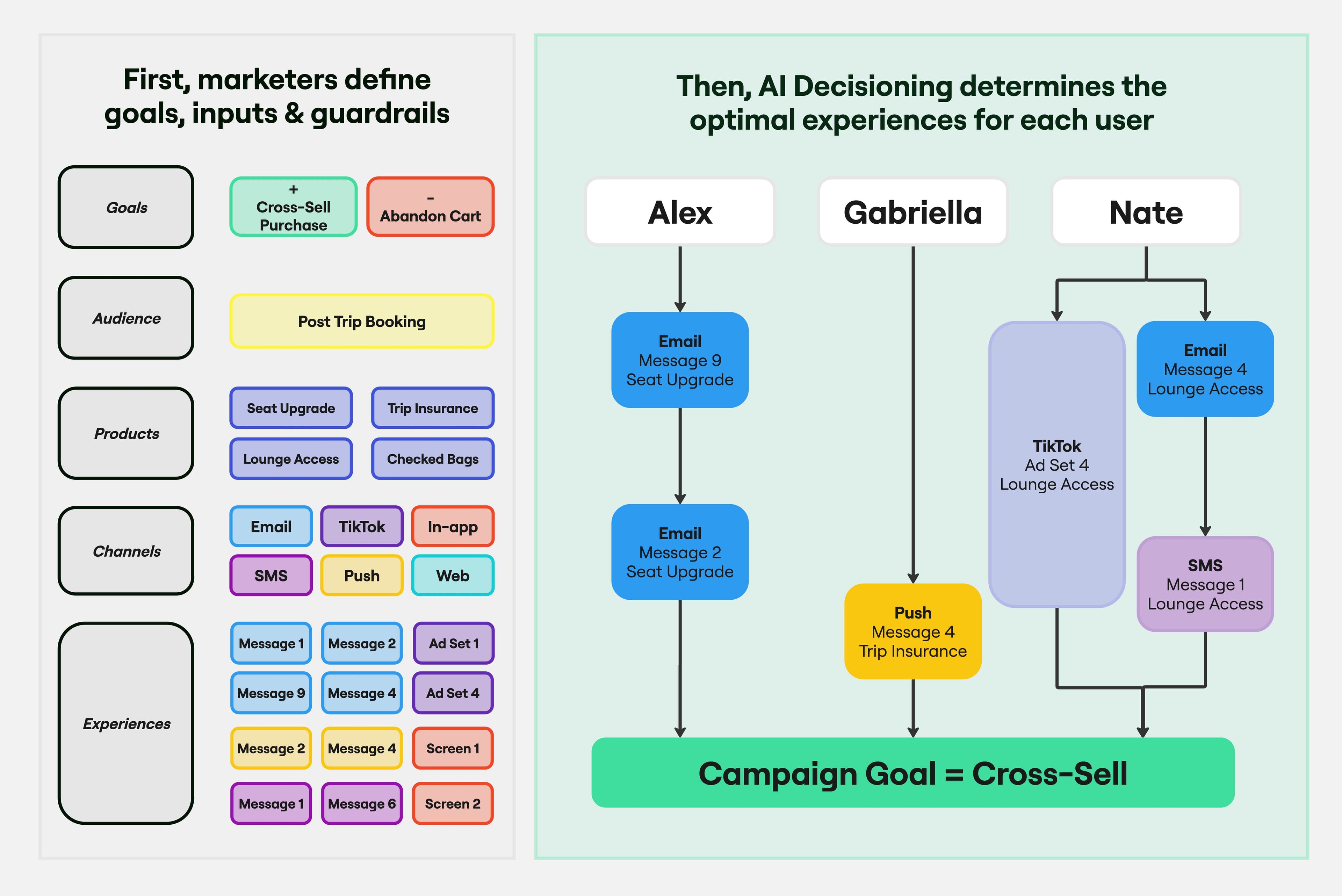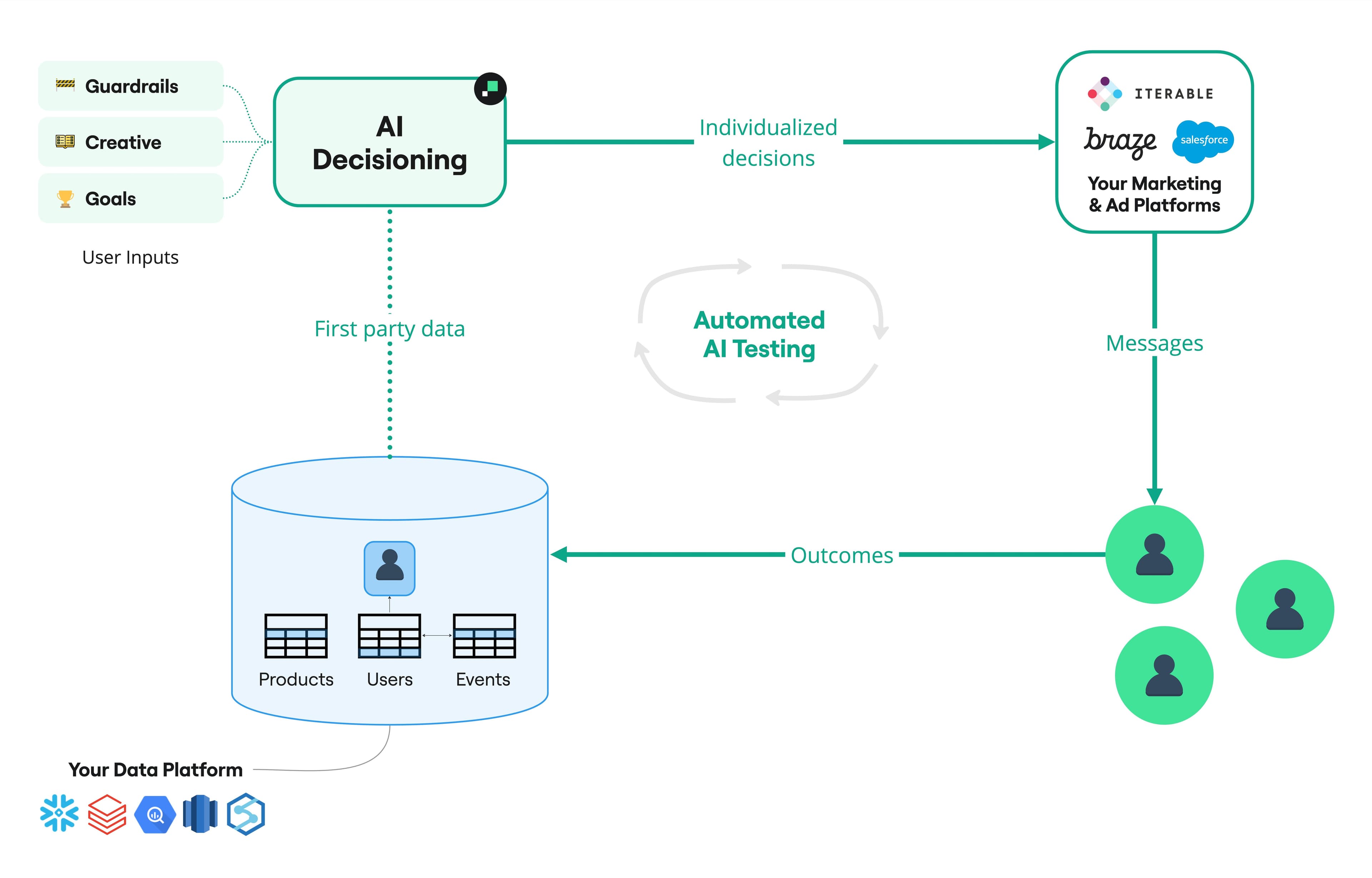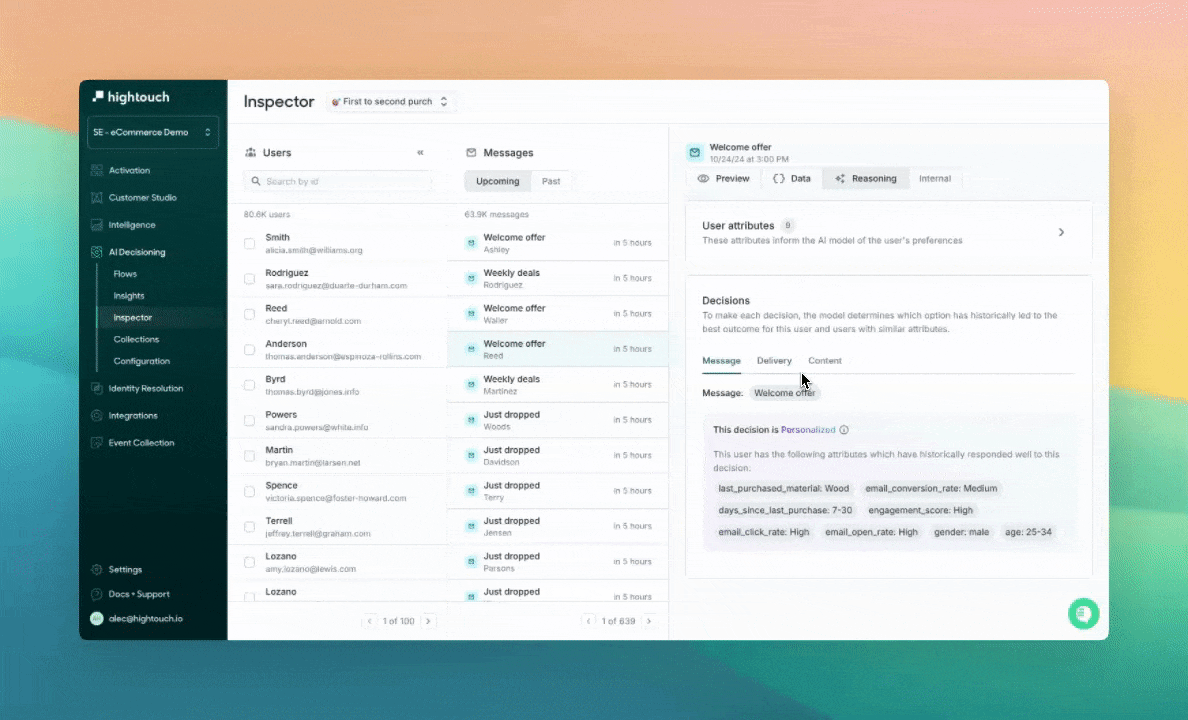In 1997, the world watched in awe as Deep Blue, a chess-playing computer developed by IBM, defeated Garry Kasparov, the reigning world chess champion. Deep Blue used its computational power during the game to analyze millions of possible moves, optimizing each one until it finally secured checkmate.
Fast forward to 2016, and a similar feat occurred when Google’s AlphaGo defeated Go master Lee Sedol in a game that was thought to be even more complex than chess.
What once seemed impossible—machines making real-time strategic decisions in scenarios of near-infinite complexity—had become a reality. Chess and Go, games that symbolized human intellect for centuries, had been conquered by AI.
Today, AI has become essential to mastering these games, completely reshaping how they are practiced and played. Just as 1997 and 2016 were pivotal moments for chess and Go, we are now entering a new era in marketing—one powered by AI.
Marketing's infinite gameboard
Today’s marketing teams face an even more complex gameboard—millions of customer behaviors, engagement opportunities, and constantly shifting goals. As customers interact across channels and platforms, marketing strategies must adapt just as quickly. What worked yesterday may no longer be relevant today.
With so many variables in play—humans alone can't keep up with this level of complexity. The speed, depth, and scale at which decisions need to be made have surpassed what traditional marketing strategies and platforms can handle.
Enter AI Decisioning—the new grandmaster of marketing.
From millions of data points to millions of decisions
AI Decisioning allows marketers to deliver personalized, high-performing customer experiences at scale. Just like Deep Blue analyzed millions of moves to outmaneuver Kasparov, AI Decisioning processes vast amounts of customer, campaign and business data to decide on the best possible experiences for each individual.
Think of it like playing chess: instead of just predicting the next move, AI Decisioning uses machine learning to analyze every past interaction and optimize every future decision to achieve the best outcome. In marketing, this means continuously refining strategies to drive users to your desired business outcome—whether that's driving a cross-sell purchase, boosting engagement, or building long-term loyalty.
AI Decisioning in action
To understand how AI Decisioning works, imagine you work for an airline aiming to increase revenue from ancillary services like seat upgrades, baggage fees, and trip insurance. While flight bookings are a primary revenue driver, these additional services are critical to profitability.
Traditional strategy: broad offers after booking
Historically, your team would send generic post-booking offers to all customers—seat upgrades, baggage add-ons, and trip insurance. You might segment customers into broad groups (e.g., frequent flyers vs. occasional travelers), but this approach still fails to capture each individual's unique preferences.
AI Decisioning strategy: personalized cross-sell optimization
Now imagine your team using AI Decisioning. Instead of sending the same offer to every customer, AI Decisioning analyzes individual behaviors, preferences, and past interactions to tailor personalized offers. The system optimizes each user’s individual journey for specific outcomes, whether it’s upselling, driving add-on purchases, or nurturing long-term loyalty.
For instance:
- Alex, who rarely buys trip insurance but frequently upgrades to premium seats, receives a personalized offer for a seat upgrade immediately after booking a flight.
- Gabriella, who often travels with checked baggage and frequently buys insurance, gets a mobile push notification offering discounted trip insurance before her long-haul flight.
- Nate, a business traveler, is targeted with a series of personalized messages (email, social ads, SMS) promoting premium lounge access—a service he has shown interest in.

With AI Decisioning, every customer journey is dynamically personalized, ensuring more relevant interactions and optimized cross-sell opportunities.
The mechanics of AI Decisioning
At the heart of AI Decisioning is reinforcement learning, a type of machine learning that continuously tests different strategies and learns which actions drive the best outcomes. This means that every customer interaction is an opportunity to optimize and refine the experience.
Here’s how it works:
- Automated experimentation: AI Decisioning constantly tests different combinations of messages, offers, and timing across your customer base to find the best way to interact with each customer. It’s like running countless A/B tests at once, but at a scale no human team could manage.
- Individualized decision-making: Unlike manual rule-based systems, AI Decisioning analyzes all available data, channels, messages and creative to determine the best treatment for each individual customer. It doesn’t just segment audiences—it tailors every interaction based on the customer’s unique attributes, preferences, and historical data.
- Continuous learning: Every decision AI Decisioning makes feeds back into a continuous learning loop. The system doesn’t just make one decision and move on—it keeps learning, experimenting, and adjusting, constantly refining its strategies to improve performance over time.

AI Decisioning seamlessly integrates with your current tech stack, automating decisions and optimizing customer interactions across all channels.
Trust and transparency
A core pillar of AI Decisioning technology is trust, enabled by strong governance, observability, and guardrails. While AI Decisioning takes the heavy lifting of optimizing customer interactions, marketers retain full control over strategy. AI operates within predefined limits to ensure decisions align with brand guidelines, compliance regulations, and data privacy standards.
With robust governance and observability features, marketers can see how decisions are made, what data is used, and what outcomes are achieved. This visibility gives teams the confidence that each decision is ethical, compliant, and on brand.

AI Decisioning offers full transparency so marketers can trust every decision while ensuring compliance and control.
The future of marketing
AI Decisioning represents the future of marketing—a future where brands move beyond manual A/B testing and static campaigns. Instead, marketing will be driven by always-learning systems that experiment and optimize every customer interaction autonomously.
Like chess, marketing is no longer about a single static strategy; it's about continuously making thousands of right decisions—each one fine-tuned to guide customers to your desired outcome.
Interested in learning more about AI Decisioning? Reach out to our team today for a demo and see how AI Decisioning can transform your marketing stratgey.















